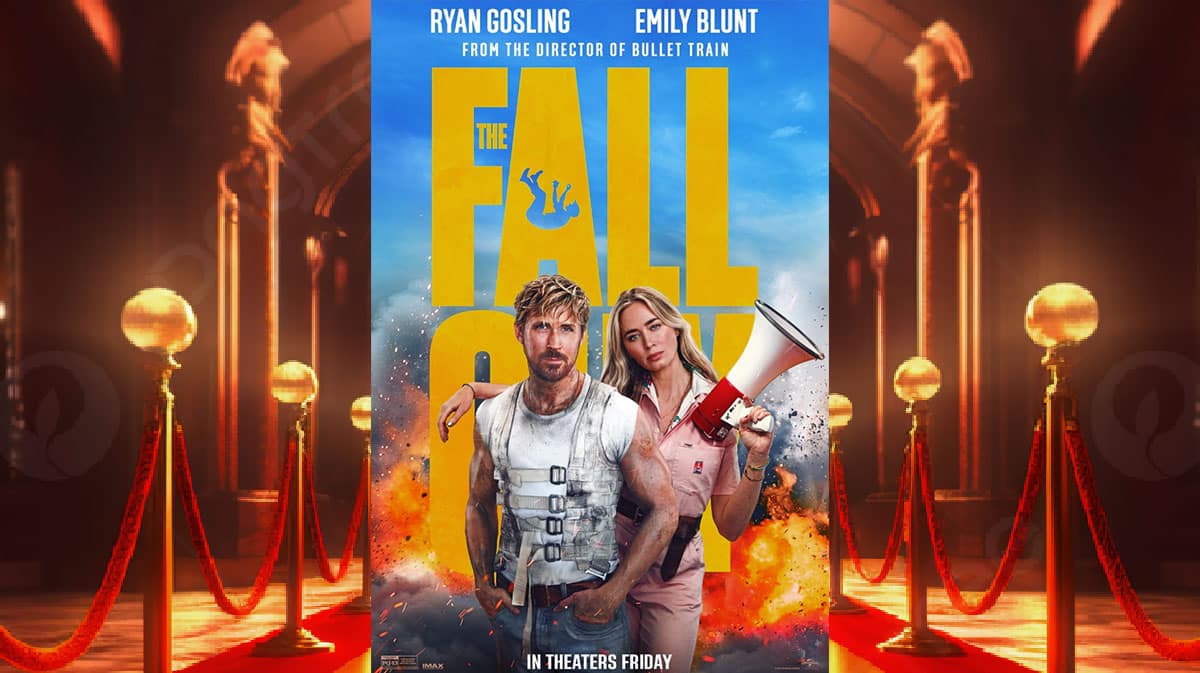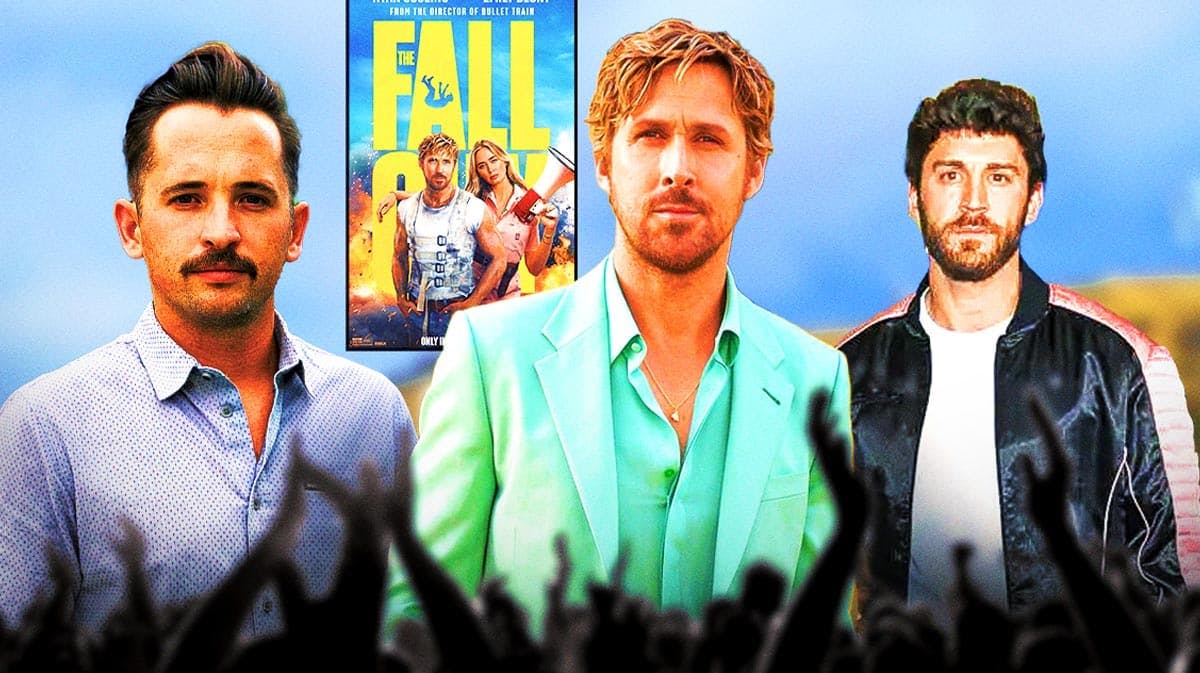Among many labels applicable to the Ryan Gosling-led The Fall Guy – a throwback summer blockbuster, an adaptation of a 1980s TV series, a romantic action-comedy — the filmmaking team might be proudest to hear it described as a love-letter to the long-under-heralded craft of stunt work.
In The Fall Guy, directed by former stuntman David Leitch (Bullet Train, John Wick), Ryan Gosling plays Colt Seavers, a worn-down stuntman driven back to work when the star of a Hollywood production being directed by his former partner, Jody Moreno (Blunt) goes missing.
Stunt work appreciation has become a hot topic in movie discourse. Tom Cruise still ingeniously markets his films around his lunatic stunts. The John Wick franchise (produced by Leitch) has mainstreamed balletic gun-fu choreography. Momentum for a stunt category at the Academy Awards appears to be gaining stream. (Lukas Gage, who benefited from superb stunt design in Road House, approves.)
ClutchPoints' was fortunate enough to chat with Ryan Gosling's stunt doubles Logan Holladay (driving), and Ben Jenkin, and The Fall Guy stunt coordinator and second-unit director Chris O'Hara.
Note: This interview has been edited and condensed for clarity.
The Fall Guy stunt team interview

ClutchPoints: How is your experience and relationship with David reflected in the movie? The whole thing feels very earnest.
Chris O'Hara: David is been one of my best friends. We've grown up in the business for the past 30 years. We've lived together — he was one of the groomsmen at my wedding.
When you get to do a movie like this with one of your best friends and be able to collaborate and really have stupid ideas and have good ideas and have access to the director on a friendship level, and talk about things off the cuff, it really creates something special. And being part of the process from very early pre-production before the script was even finished, we were really working together on this.
Seeing all of the hard work from the past year-and-a-half of our lives, come out in the finished product of our movie — it's amazing to see what David created. What we created as a family. It was really, really epic.
CP: What was the stupidest idea that came to fruition?
COH: Early on we had a platter of what could be possible. As you go down the process, you realize there [are] time constrictions, budget restrictions, locations restrictions. One of the craziest things was [Cole] basically riding on the the camera car. That was something that took a lot of development, a lot of research.
We needed to get other departments involved. Our special effects supervisor, Dan Oliver, was integral in making that happen. That was one of those things at the beginning, it's like, “Man, we're really gonna do this.” That's the one thing out of our platter that I've never seen before, and I wanted to make stick. We came up with what you saw on screen.
Logan Holladay: It's hard to do something that has never been seen before. There's so many movies, there's so much content. It hardly ever happens.
CP: In sports and movies, we talk a lot about the qualities that make up a great star, like Ryan Gosling, or characteristics that make up a great athlete. What makes a great stunt person?
Ben Jenkin: Stunts have lots of different specialists, but as a general stunt person, you want to broaden your skills and learn as many things as you can. If you're getting into the doubling side, being aware and being good at mimicking movement of your actor is important.
Stunts is a rough job. You gotta get hit and you gotta get back up, and you have to do that 10, 20 times. So there's fundamental skills and mindsets that you have to have as a stunt performer, and being tough is definitely up there.
CP: Generally speaking, do you think movies benefit from actors doing their own stunts?
BJ: It totally depends. I don't think you're going to have actors who want to get hit by cars or smashed through glass or get set on fire, and that's kind of where we come into play. It's great when they can do their own stunts and we can integrate them into their fights and falls. But I feel like most actors would want a stunt person to get hit by a car or roll or crash a car.
(Note: Logan set a Guinness World Record for a cannon roll on The Fall Guy.)
LH: Even if they're capable of doing those things, it doesn't make a lot of sense if you're not going to see that actor's face, because the whole production is riding on this actor being able to act and make this movie. So if they end up getting hurt because of they did something that they didn't necessarily have to do, then everybody is out of a job and we can't make this movie anymore.
So you want to put the stunt people in as much as you can. You also wanna put the actor in as much as you can too, but you wanna make sure that the show goes on and you don't have an incident that stops the whole thing for the next two months.
It's not about one person, it's about one character. Sometimes it takes two, three, four people to make a really good character. It's about making the greatest movie with the greatest characters.
COH: There's a place for actors to do their stunts. We know some actors out there that do a lot of their own stuff and those actors legitimately are great all-around athletes. But what it comes down to is, when you're working with an actor, it's still the actor, right? As stunt people, we understand what's gonna happen after the scene's done. We're gonna be bruised, it's not gonna feel great.
Things that you could do with a stunt person that really get physical, you're gonna take those down a little bit when you're dealing with an actor. You just gotta put egos aside and think about what's the best situation for the movie.
CP: What the partnership like with Ryan Gosling?
LH: Amazing. Ryan wanted to learn as much as he possibly could, and he also wanted us to do as much as he could. We appreciate what he does, he appreciates what we do. All of us are on the same page of making the best character possible, so there was no there was no egos of like, “I'm the man, I have to be the guy that does this cause I'm the actor.” We really worked together and I think made a really cool character because of our camaraderie.
BJ: I echo that. He was up for doing everything. The first time I met him, I said, “Is there anything you're scared of?” And he was just like, “I'm not too fond of heights,” and the opening of the movie we drop him 115 feet on a descender. He was so game.
CP: What was his reaction to the drop? Was he shook?
BJ: When you're that high and you're being dropped that fast and that far, and then you're hanging another 60 feet, and then you get pulled back up, the adrenaline is pumping. I'm sure the adrenaline was sky-high for him. That's one of those scenes that it was really important to get Ryan's face in there.
(Note: The scene features a long take, culminating in the stunt.)
COH: We pull Ryan from the trailer all the way and drop him. David pitched him on what he wanted it to be and how we can safely achieve it. We took him out to a parking lot and went through all of the stuff that we're gonna do in the building exactly as we were gonna do it. So when we got there with Ryan, we had all of these protocols, all of these things worked out so that it was seamless.
We got a really epic shot with Ryan Gosling and put him in a place that we totally felt safe and can control. I think he was psyched that it was over.
CP: There's a joke in the movie about the Oscars adding a stunt category. It feels like there's more conversation around it. What's something moviegoers can look for to appreciate good stunt work?
COH: Is the action seamlessly integrated into the whole story? One beautiful thing about what we did on The Fall Guy, we weren't doing gratuitous action. It was all real action driven by the story. Fast and Furious, Marvel movies have a place, but sometimes it's overload. You can't tell what's real, what's not, [and] what's CG enhanced. But some of those movies are great action movies and they work hand in hand with the visual effects department.
What compels you? What was gratuitous? What kind of made you feel what was the right action for the story? That's where we're really trying to go.
Hopefully, some day we're not just, “stunt guys.” The first question everybody gets is, “Have we ever been hurt?” I want it to be like, “What's the greatest stunt scene you've ever been a part of?”
We want to be recognized as stunt designers.
I was probably one of the first five people on this movie, designing and seeing what we can do. For our community and what we do for the movie business, we just want to be recognized by somebody for the design and really putting the whole big package together.
The Fall Guy is in theaters.
